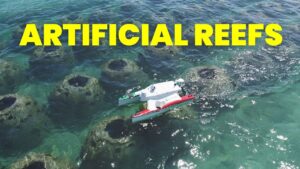Font size:
Print
Species in News: Magnetotactic Bacteria
Context:
- Recently, magnetofossils- fossil remains of magnetic particles produced by magnetotactic bacteria, were discovered in rock varnish layers in Ladakh, India’s Himalayan mountains.
- The study proposing that biotic processes are involved in the formation of rock varnish reveals how life can survive in extreme environments.
- This insight is valuable for astrobiology and for planning future space missions aimed at identifying potentially habitable environments beyond Earth.

About Magnetotactic Bacteria:
- Type: Prokaryotic microorganisms.
- Habitats: Ubiquitous in freshwater and marine environments.
- Significance: It is believed to be among Earth’s earliest inhabitants due to their preference for oxygen-poor environments.
- Function: Act as nano-sized magnets, aligning the bacteria with Earth’s geomagnetic field lines using internally synthesised magnetic nanoparticles.
- OATZ: Preferential habitat is the oxic-anoxic transition zone (OATZ) where oxygenated and oxygen-deficient waters meet.
- High Oxygen Concentration: Bacteria swim forward to the OATZ by rotating their flagella counterclockwise.
- Low Oxygen Concentration: Bacteria swim backwards to the OATZ by rotating their flagella clockwise.
- Types of Magnetic Minerals Synthesised by MTB: Magnetite (Fe₃O₄), Greigite (Fe₃S₄), Combination of Greigite and Pyrite (FeS₂).
- Sulphur Sequestration: It synthesising iron sulphide minerals can sequester significant amounts of sulphur, impacting the biogeochemical cycling of sulphur and iron.





